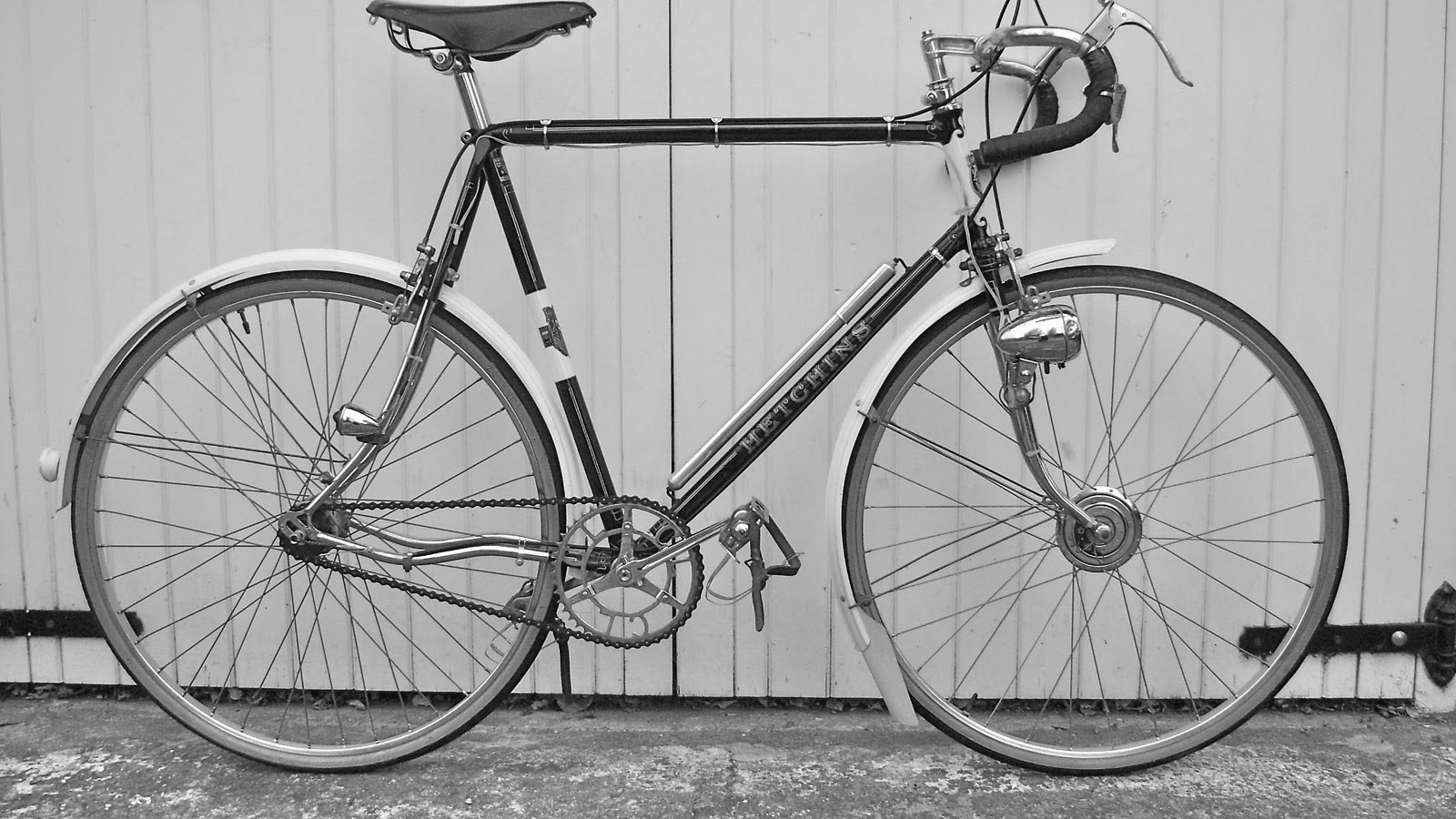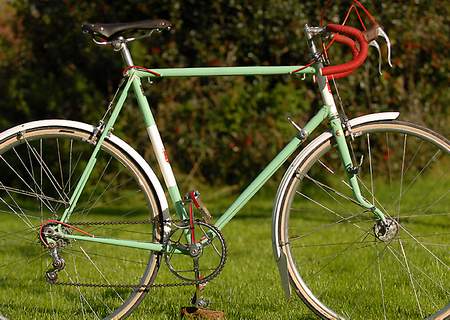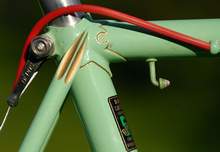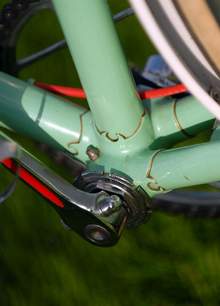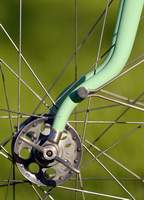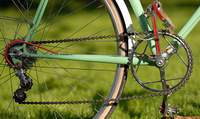Bates BAR - 1956
Posted: Wednesday 12th August 2020
How it was acquired:
This wonderful machine first caught my eye at the Benson cycle rally. The owner was (and still is) a serious cycle collector who specialises in much earlier cycles and he bought this Bates in about 1990 after it won a concours competition at a cycle rally in the North of England. He rode it just once, but found it so uncomfortable in comparison to his sprung-saddle early machines with their balloon tyres that he locked it away with his collection of penny-farthings. And there it remained for the next 15 years! When I first saw it, I loved the colour – very 1950s – and the fact that all of its componentry is of high quality and perfectly in period. When I learned that it was for sale I just had to have it. Once in my possession, all I had to do was give it a good polish and to service all the bearings because the grease had turned almost solid. I discovered this when I tried riding it and it felt like cycling through porridge! It now rides smoothly, comfortably, and with a level of responsiveness quite unexpected from a machine that is now more than fifty years old.
A few items were changed. The original Milremo stem was too long and the AVA bars were badly corroded under the tape, so these were changed for a classic combination of Reynolds stem (from a slightly earlier period – about 1950) and GB engraved ‘map of Britain’ bars. Also, I swapped the GB Courier caliper brakes for Mafac centre-pulls because I prefer them. Also, it came on original 1950s Dunlop Road Racing high pressure tyres which I changed because the gum walls had softened over the years and they stick to the rims like glue. Finally, I swopped the four-speed Moyne block with its time-trial 16-22 gearing for a five-speed 14-28. This is far more suitable for hilly terrain. The Simplex Tour de France rear mech seems to cope with this wider range although I have been told that the cage in this position is fitted upside down. Seems to work okay though.
| Frame | 24" Frame No.17702B built April 1956. Reynolds 531 Cantiflex tubing and Nervex Professional lugs. Simplex rear dropouts. Bates Diadrant front forks. Braze-ons: Bates mudguard mounts, pump pegs on top tube, brake cable and gear cable eyes, single Simplex gear lever mount, Simplex gear hanger, lamp bracket mount on front forks. Finished in Eau de Nil with cream band on seat tube and head tube. Lugs lined in gold. Fork ends chrome plated. |
| Wheels | Conloy Constrictor 27-inch alloy rims with double-butted chrome plated spokes (32 front, 40 rear). Shelwin large-flange front hub (note bevelled face where spokes attach), Powell large-flange rear hub, double sided. Harden wing nuts on front wheel, Huret Luxe chrome-plated bronze on rear. 27" x 1¼" tyres. |
| Dimensions | Seat tube 24", top tube 23", chainstays 17½", Wheelbase 41" |
| Chainset | Williams C1200 chainset with 49T single chainring |
| Pedals | Lyotard quill with Cristophe toeclips and straps |
| Gears | Simplex Tour de France five-speed with Simplex down-tube lever. Maillard 5-speed 14-28 block |
| Brakes | Mafac Dural Forge centre-pull with GB Superhood levers (early cast type, with adjusters), CLB hoods |
| Stem/Bars | Reynolds alloy 2 ¾" with GB 'Map of Britain' engraved bars 15" (38cm) |
| Saddle | Brooks B17 Swallow with Brooks clamp, dural seatpin |
| Headset | Stronglight |
| Extra details | Bluemels 'Lightweight' mudguards, aluminium 18" pump, Reynolds aluminium lamp bracket, ?????? saddlebag (when fitted) |
Features that make it special:
What attracts me to Bates as a marque is the innovative and effective design of the frame. Bates claimed that their cycles had ‘the perfect combination of lightness and rigidity’ and this they achieved through the use of cigar-shaped ‘Cantiflex’ tubing with a larger diameter in the middle of the tube than at each end. It’s a cunning way of making the tubes stiffer without adding weight and results in a machine that is light, agile and sure-footed. Also, the unusual ‘Diadrant’ forks with an S-shaped bend are claimed to be more compliant than the conventional style, so rider comfort is retained. Neat attention to detail can be seen in the unusual mudguard mountings and, on my machine, the chrome-plated drop-outs.
This particular machine is special not just because of the frame design but also because all the components complement the frame perfectly. Also, they are in excellent original condition – the chrome plating on the Williams chainset and the Simplex derailleur is all original while the period Bluemels Lightweight mudguards appear never to have seen any rain, let alone mud. The Reynolds stem is a rare item, as are the hubs. The rear is a Powell and the front is thought to be a Shelwin and features Harden wingnuts. Note the very unusual bevelled flange where the spokes attach to the front hub. These hubs may be ‘odd’ but they look just right laced to the matching Conloy rims.
Overall, this is a machine that, to my eye at least, possesses a certain harmony. It has the right type of high quality componentry matching an elegantly engineered frame. It adds up to a classic lightweight machine that is greater than the sum if its parts – and that’s why it’s special.
Posted: Wednesday 12th August 2020
Upcoming Events
Whether you are looking for a gentle social meet up, or a 100-mile ride browse the community’s upcoming events and plan your next weekend outing.
